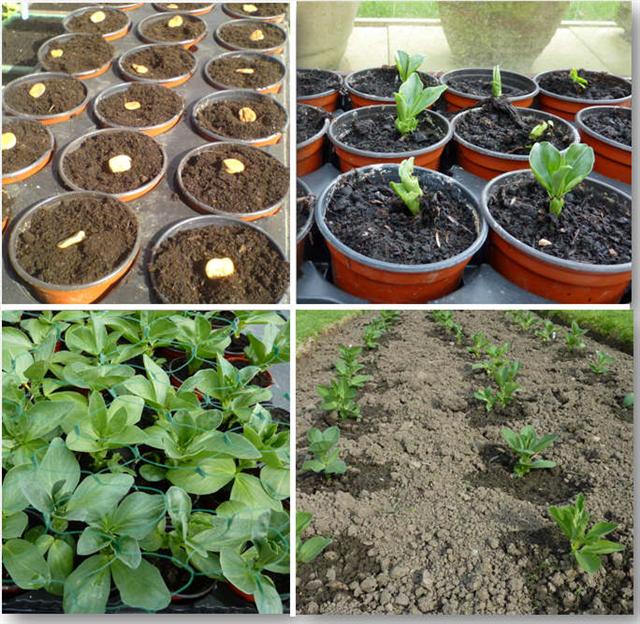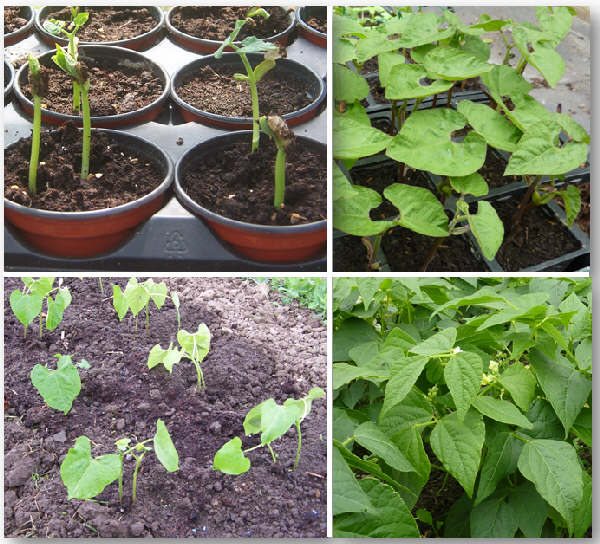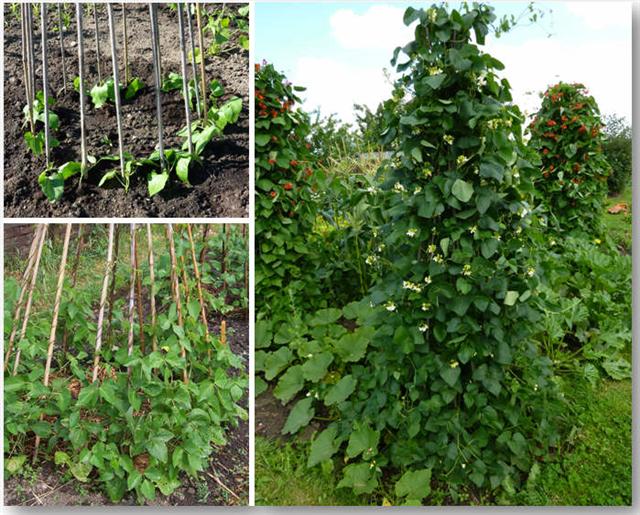




There are very few seeds that we sow directly in the ground. First of all we garden on heavy clay which isn’t the friendliest of soils in which to raise seedlings. It takes quite a while to warm up after winter, during very wet periods becomes very muddy and boggy and during dry periods can often become rock hard. Any seeds that we do sow directly tend to be sown into a drill of compost.
We also thinks that by planting as small plants many of our crops have a better start in life and are more able to resist any pest attacks. Nothing is worse than having a row of healthy seedlings disappear due to something munching along the whole row.
All types of bean seeds are sown in small pots and planted out when conditions are right and the plants are large enough to look after themselves.
Broad Beans
The first bean seeds to be sown are the broad beans, the hardiest of the beans we grow, which unlike many we don’t sow until spring. We have plenty of broad beans in the freezer if we want an early supply. Usually we sow these in mid March with sowings also in mid April. Just before planting the young plants are hardened off in the cold frame and then planted in open ground in April and May respectively and a harvest expected in July.

French Beans
French beans are the least hardy of the beans that we grow. Again these are sown in pots but this time a little later. We sowed a succession of French beans last year which extended our picking season. We grew three varieties to produce a mixture of coloured beans – green, yellow and purple. The first lot of beans were sown in mid May and planted out at the beginning of June. Two seeds are planted in each pot and if each grows well these are split and planted separately when planted out. Sometimes a colder snap after planting out the beans can cause then to droop and look a bit sorry for themselves but even if they shed leaves all is not lost as they often recover after this shock.

Runner beans
These are grown in a very similar way to the French beans. The seeds are also sown in mid May and planted out at the beginning of June. Before planting out runner beans some sort of frame needs to be erected. (You can grow climbing French beans and so the same would be true if growing that type of variety). Bear in mind that when fully grown the beans will be very leafy and strong gusts of wind could blow over any structure that isn’t firmly in the ground. Runner beans will climb up any available object so it is worth keeping an eye on where the beans are going so you can coax them in the direction that you wish them to take otherwise you can be left with a tangled mess.

A simple step by step guide on how we grow our peas and beans is available here.
More information about building a bean frame is here














